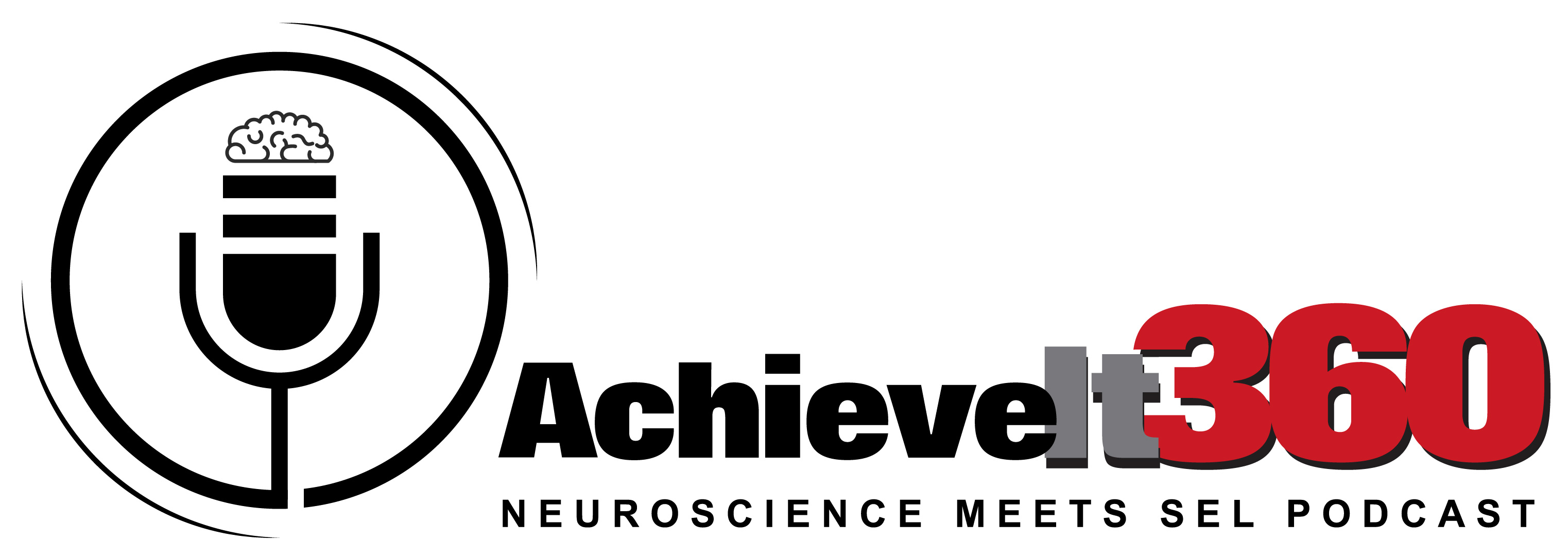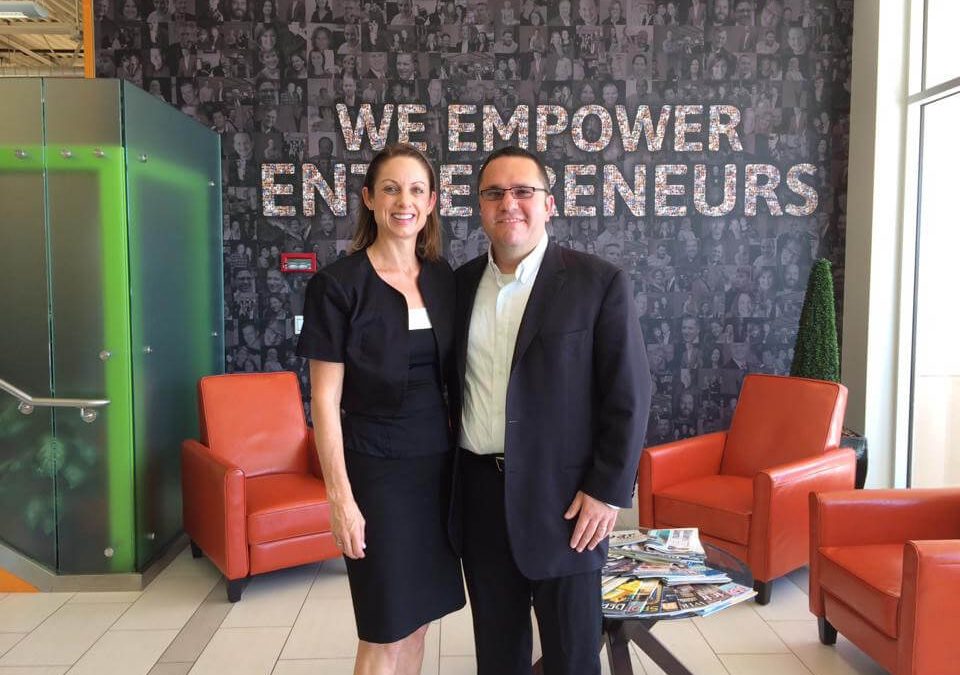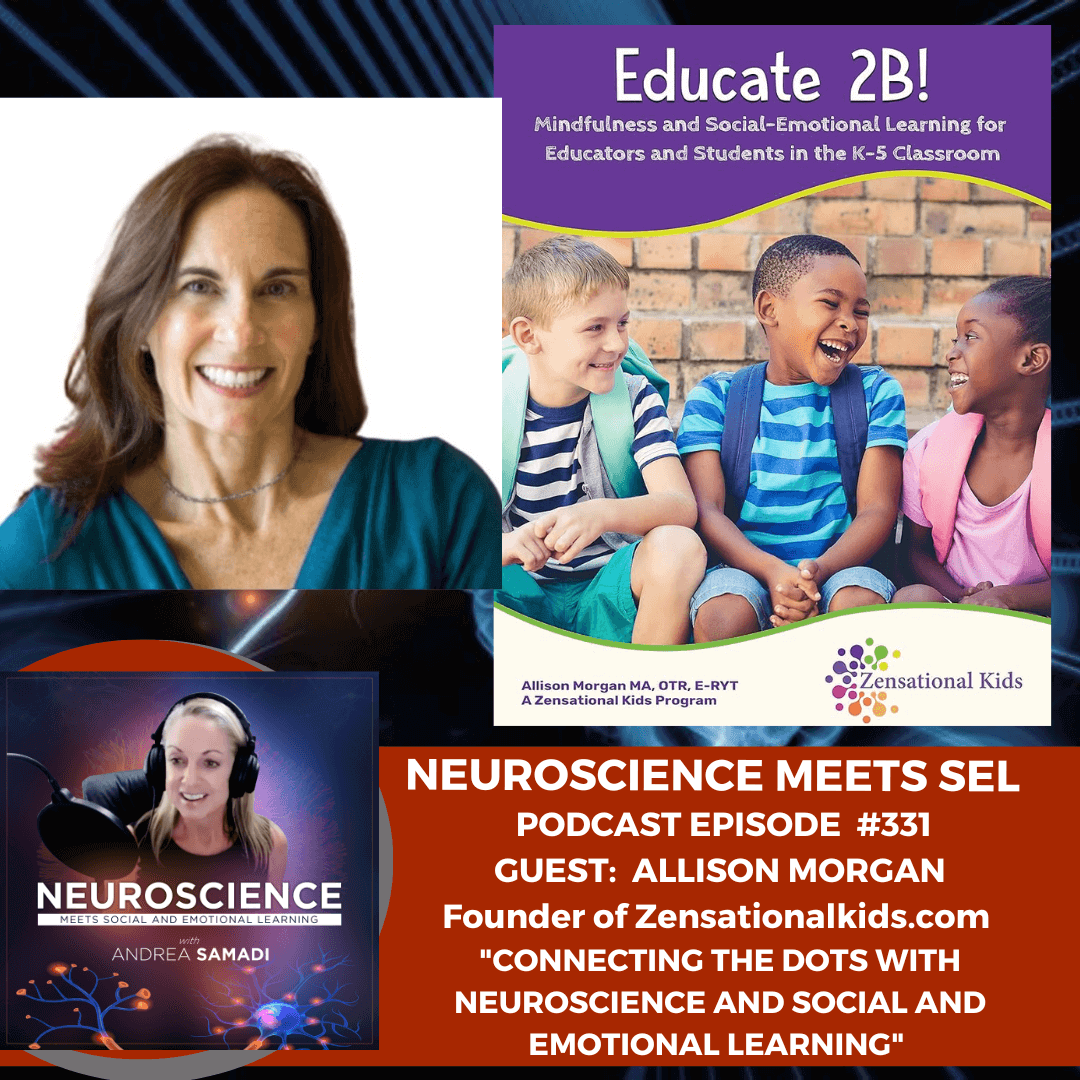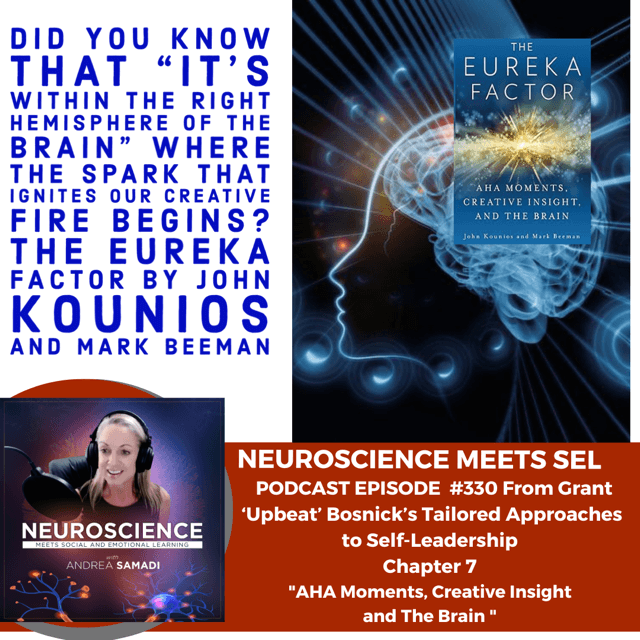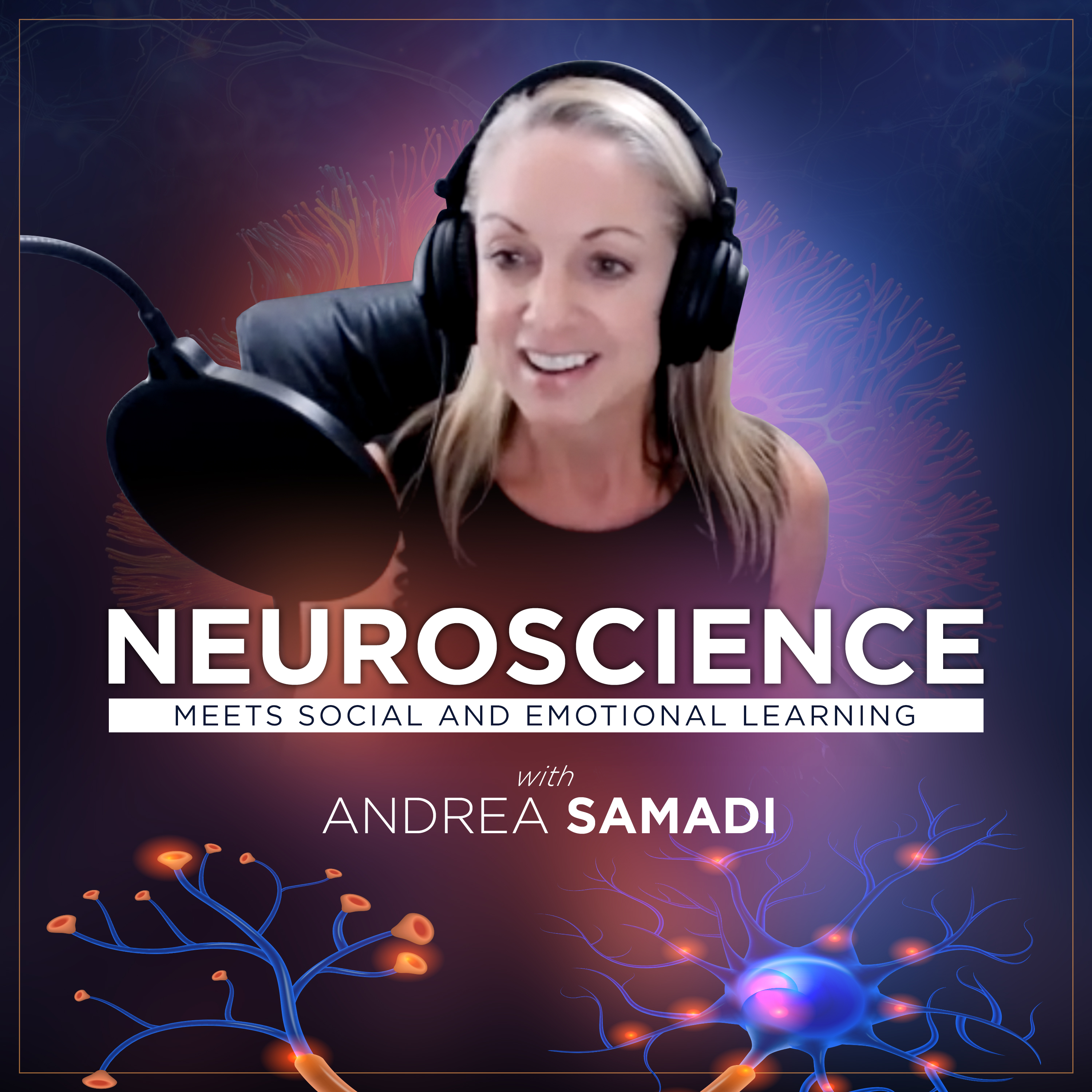Welcome to our FIRST “Neuroscience Meets SEL Podcast” this is Andrea Samadi. In this episode, we will be talking about the WHY behind setting up a social and emotional learning program in your school or district, or emotional intelligence training in the workplace.
Today I have with me Majid Samadi, Corporate Sales Leader for the past 22 years, and my husband, and we will be talking about “The Why Behind Social and Emotional Learning or Emotional Intelligence Training for Schools and Workplaces” and offering his thoughts with his experience in mind.
Andrea to Majid: As someone who works in the corporate world, why do you think teaching SEL in our classrooms is so important to develop our future generations? What skills do you think are missing?
Majid to Andrea: What about you? Since you were a teacher in the classroom, why do you think SEL programs are so important in today’s classrooms? Why now? Hasn’t SEL always been important for preparing young people for the workplace?
Sure, these skills have always been important, but the research wasn’t there 20 years ago.
When I first started my career in education, in the late 90s, as a classroom teacher, I felt overwhelmed and frustrated by the lack of resources to help me to manage and teach my students (my first teaching assignment was a behavioral class) and I had to be creative to hold their attention, let alone teach what was required. I discovered social and emotional learning skills by chance through a motivational speaker.
After seeing students working with skills that developed their attitude, mindset, confidence and goal-setting abilities, (you know, what we used to call soft skills) and it skyrocketed their results, (I saw kids who were able to go from C grades to A grades, from being a bench warmer to the starting line-up and improving their personal lives) I knew we were onto something. It actually hit me like a brick since I was really struggling to make an impact on the students in my classroom, and then here were these 12 teens talking about their results after only a few months of working with lessons that mirrored growth mindset, and self-awareness…and I knew I was meant to be doing this work back then. It’s been a 20-year journey and I am excited to share the resources and ideas with everyone here on the podcast.
I know it won’t shock educators to know the statistics that support the need for students and SEL but did you know that:
¼ students struggle with anxiety
1/5 struggle with depression
Research now shows us that students with strong SEL health “demonstrate self-control, communicate well, problem solve, are empathetic, respectful, grateful, gritty and optimistic.”[i] We also know that neuroscience has advanced our understanding of these SEL skills.
Here’s more research of what we know now:
“Success is life, and in college and career specifically, relies on student’s cognitive, social, and emotional development. (Integrating Social, Emotional and Academic Development: An Action Guide for School Leadership Teams) page 4
“Research shows that teaching these skills result in immediate and long-term improvement in academic achievements and are a better predictor of success than academic ability alone.” (Perspectives of Youth on High School and SEL Webinar, Dec. 11/18).
(Research of over 200 studies show that students who studies SEL have an 11% gain in academic achievement). School climate, autonomy, educator health improves.
We also know that there is a connection between educator cortisol increase and student cortisol increase. We know that teachers who demonstrate Social and Emotional Learning competencies are more likely to stay in the classroom longer because they are able to work more effectively with challenging students- one of the main causes of burn out. That’s why this topic is of such interest to so many people these days.
“School leader support is the biggest predictor of whether change takes hold and is beneficial” (SEL and Principal Leadership) April 2, 2019 Edweek Webinar. (which is why we knew it was important to launch this podcast with ideas, resources and tools).
Adult SEL must be addressed and trained so teachers can use these skills with their students as they are teaching.
Only a well-regulated adult can help regulate a student. Teaching is a high stress job, tied for nursing. There must be a plan in place for educator well-being.
Since the research is here and proving what we have known for decades, the time is now to implement these programs into the classroom.
We know from the feedback from the Edweek 2019 Social and Emotional Learning in Schools Summit that educators are “interested in social and emotional learning but aren’t always sure where to start” [ii] and they are looking for “clear starting points in developing their own SEL strategies.” [iii]
This was one of the main reasons behind launching this podcast for ideas, tools and resources.
I also just saw a tweet from the National Association of Elementary School Principals (NAESP) showing that the US House of Representatives have just passed a bill to increase educational funding by $11.7 B. SEL of one of the initiatives on the list to receive funding (Listed at $260M). Finally, this need is being backed financially. We should see some changes in the next few years.
Andrea to Majid: What do you think? Do you see us at the beginning of the curve?
Andrea to Majid: How about the corporate world? Why do you think emotional intelligence is important for our workplaces? I know in the corporate world, these skills aren’t new, but they are “newly important.” A recent survey showed that 58 percent of employers say college graduates aren’t adequately prepared for today’s workforce, and those employers noted a particular gap in social and emotional skills.
Andrea to Majid: What do you think? You’ve been working in the corporate world for over 22 years. What is emotional intelligence? What kinds of scenarios do you see with this gap with social and emotional skills? What can Emotional Intelligence Training do for the workplace?
First, let’s define Emotional intelligence (shortened to EI or EQ for emotional quotient) can be defined as: “EQ refers to someone’s ability to perceive, understand and manage their own feelings and emotions” (Chignell, 2018). [iv]
Further, there are five distinct components of EI:
- Self-awareness: This is important in the workplace because you need to know yourself first before you can help others with your product or service. This is where it all begins.Self-regulation. There will be many times in the day where you will be tested and to be able to manage your emotions under pressure is very important.Internal (or intrinsic) motivation. What is motivating you to get up and serve each day, and do you know what motivates your customers?Empathy is an important skill to have to connect with others. You must be able to see the world through someone else’s eyes.Social skills are important from ordering your lunch in a restaurant, to picking up your rental car and dealing with the front desk employees in the hotel you are staying at.
It’s easy to see how EI applies in the workplace! Those who learn to master these important skills will get ahead faster with less effort and frustration than those who lack these skills.
Majid gives an example.
Majid to Andrea: So now that we know the “why” behind the introducing a program to your school or workplace, what are some good first steps to begin? For Schools, there are some steps to consider:
- Identify your team. In schools this will consist of principals, counselors, teachers, district leaders and students.Align your mission (what you are doing) with your values and beliefs (why you are doing it). This will create the buy in needed.Map Out Your Strengths, Weaknesses, Opportunities for Growth and Threats (SWOT) to become more aware of where you are right now, what are some areas of improvement, and some roadblocks with some strategies to overcome them.Create Your Roadmap: Now that you know where you are, where do you want to go? Based on the analysis above, what are some areas of focus?Choose Your Program Whether you look at the curriculum we offer with the Level Up program, or another program, choose the topics that will help you solve the needs you have identified and map out your year.Pick Your Training Format Choose a few schools to implement in the beginning or go District wide with all schools receiving training together.
For the workplace,
- Identify your team. In the workplace, office managers, sales leaders, and pick a few leaders from within the organization to help you spearhead your program.Align your mission (what you are doing) with your values and beliefs (why you are doing it). This will create the buy in needed.Map Out Your Strengths, Weaknesses, Opportunities for Growth and Threats (SWOT) to become more aware of where you are right now, what are some areas of improvement, and some roadblocks with some strategies to overcome them.Create Your Roadmap: Now that you know where you are, where do you want to go? Based on the analysis above, what are some areas of focus? Consider doing climate surveys to find out what employees are thinking and feeling.Choose Your Program Whether you look at the curriculum we offer with the Level Up program, or another program, choose the topics that will help you solve the needs you have identified and map out your year.Pick Your Training Format Training can be completed via webinar, or live.
Resources:
VIDEO: The Heart-Brain Connection the Neuroscience of SEL (video by Neuroscientist Richard Davidson for Casel.org). https://www.edutopia.org/video/heart-brain-connection-neuroscience-social-emotional-and-academic-learning
WHITE PAPER: SEL Guidance: What Social and Emotional Learning Needs to Succeed (Chester Finn and Frederick Hess) https://www.aei.org/publication/what-social-and-emotional-learning-needs-to-succeed-and-survive/
For School Implementations: Casel’s District Resource Center https://drc.casel.org/
How to Improve Emotional Intelligence in the Workplace https://positivepsychologyprogram.com/emotional-intelligence-workplace/
VIDEO The Impact of Social and Emotional Learning https://m.youtube.com/watch?v=YMDp8FHvZt0 (1:14) YouTube November 14, 2018
EndNotes:
[i] SEL: The Why and Hows of Implementation in a School District (Edweb) https://home.edweb.net/webinar/sel20190404/ (April 4, 2019)
[ii] Social and Emotional Learning Ed Week Summit March 20, 2019 https://www.edweek.org/ew/events/social-emotional-learning-in-schools-an-education.html
[iii] Social and Emotional Learning Ed Week Summit March 20, 2019 https://www.edweek.org/ew/events/social-emotional-learning-in-schools-an-education.html
[iv] How to Improve Emotional Intelligence in the Workplace https://positivepsychologyprogram.com/emotional-intelligence-workplace/
Podcast: Play in new window | Download
Subscribe: Apple Podcasts | RSS
